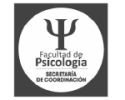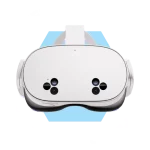
Start working with Nesplora and discover all its benefits!
Assessment & reports
Innovating together
676 – 1469 people
Consult our validity studies
eBooks, videos and webinars
Commercial, clinical and for research
New tests and constant improvements
95,000 people evaluated in
30+ countries
+ 600 publications in journals, citations, theses and books
+ 15 languages
Assessment & reports
+ 14 years
Innovating together
Prices adapted to the size of your clinic or hospital
Normative studies
676 – 1469 people
Internal and external validity
Consult our validity studies
Free training
eBooks, videos and webinars
Advising
Commercial, clinical and for research
Updates
New tests and constant improvements
All you need is a virtual reality headset, a computer and a WiFi connection.
With your contracted plan you will have access to manuals, guides, demo videos, etc.
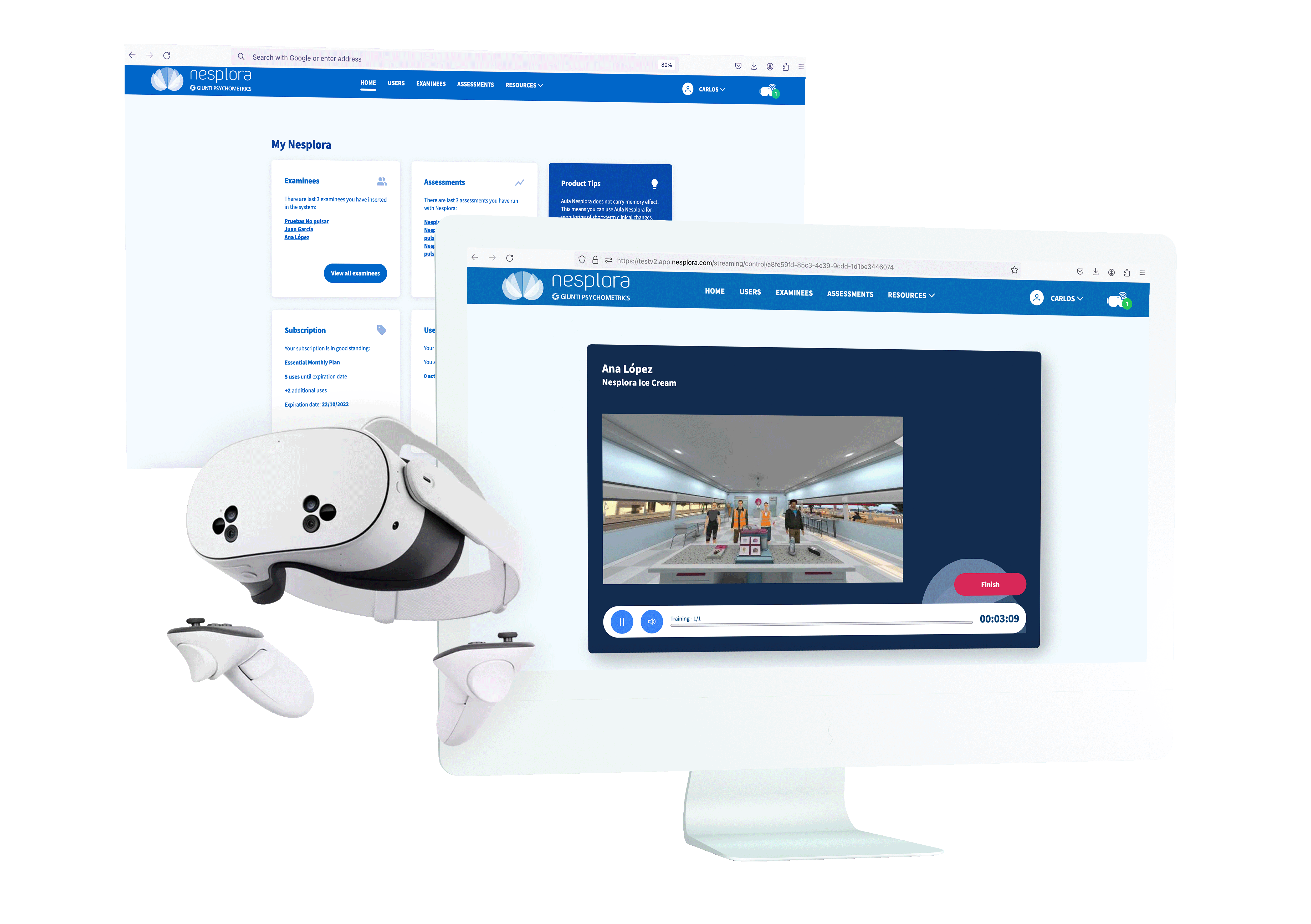
Get to know our reports in detail:
View and download an example of the report you get automatically after an assessment using Attention Kids School Aula
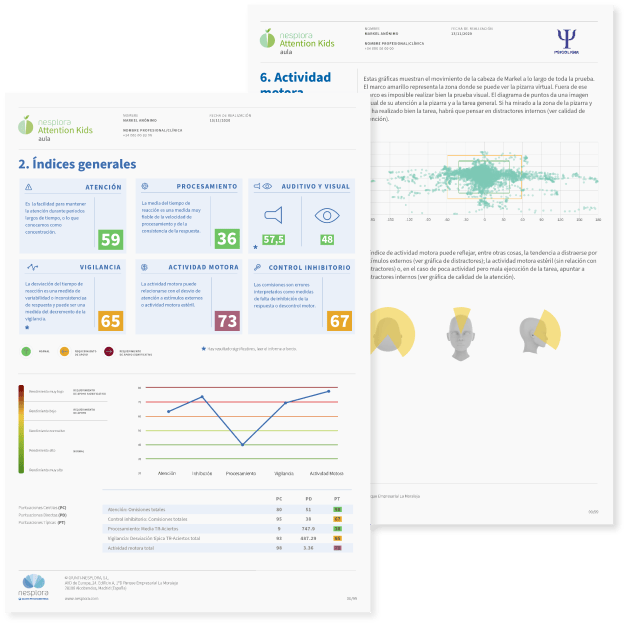
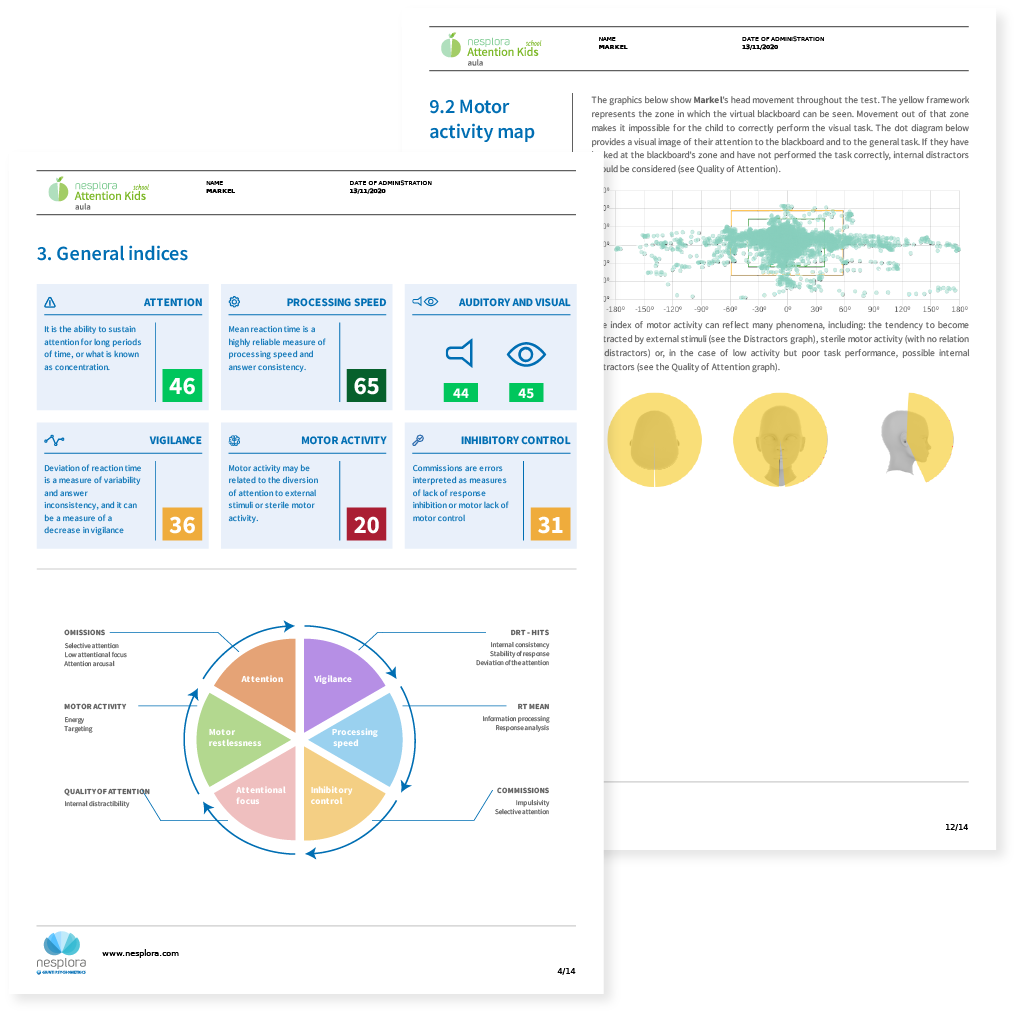
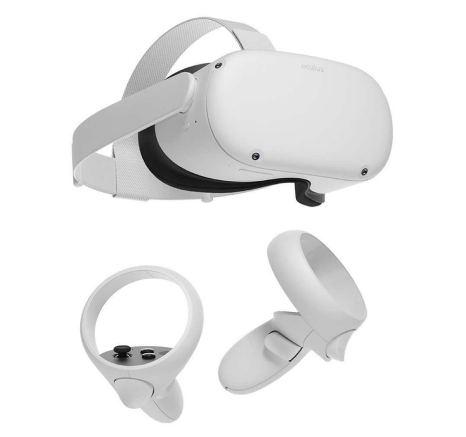
Standards and regulation



5 Stars on Google Reviews
This is what specialists who already use the Nesplora System think




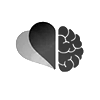


With Nesplora one can carry out neuropsychological assessments using virtual reality tests.
We develop specialised products in 3 areas of analysis:
- Attention processes
- Memory
- Executive functions
All the information about the tests here
Nesplora’s virtual reality tests are used for neuropsychological assessment and are Level C: individually applied tests of intelligence, personality and other complex instruments. They require a degree in Psychology, Psychiatry or Psychopedagogy and sufficient experience to be able to apply them.
Therefore, they are to be used by professionals in psychology, psychiatry, neuropsychology, paediatrics, researchers and teachers in the health sector and professionals working in centres, clinics or hospitals.
Virtual Reality System
Meta Quest 2, Meta Quest 3, or Meta Quest 3S; Meta Quest Pro (any capacity >64 GB)
(Meta requires a smartphone to set up the Quest headset)
Web Browser
The Nesplora platform requires a web browser (such as Google Chrome, Microsoft Edge, Firefox, or Safari) that can run on a Computer, Tablet, or iPad.
Computer:
Windows 10, 64-bit (or higher)
Mac OS High Sierra 10.13.6 (or higher)
Tablet:
Android 8.0 Oreo or later
iPad:
Apple iOS 15.1 or later
Wi-Fi Network with Internet Connection
Minimum speed: 50 Mbps. Recommended: over 100 Mbps
Headphones with the following features:
Must cover the entire ear and sufficiently isolate external noise.
Must be connected via cable to the Virtual Reality device*.
*Bluetooth-connected headphones should not be used due to a delay of a few milliseconds, which may affect scores such as reaction time.
*In the case of Meta Quest 3S headsets, only a USB-C connection is available, so an adapter or USB-C headphones will be required.
The tests are conducted in a virtual reality environment. The person being evaluated will use the Meta Quest headset, while the evaluator will use a web browser to control the assessment, where they can view the test being executed in the headset.
Check all the information about the minimum hardware requirements here
Once you have contracted the plan that best suits your needs, you will have access to manuals, guides, demo videos, etc. to install the headset glasses easily.
In addition, depending on the plan contracted, it includes a guided installation by our technical service professionals and all plans, without exception, include technical support.
- Purchase the virtual reality headset
- Check that you have the necessary hardware to use Nesplora here and an internet connection.
- Choose the most convenient plan here
- If you have any doubts, contact customers@nesplora.com for advice.
Once you receive the headset and purchase the plan, you will be able to follow the Nesplora installation guide both on the VR headset and on the PC that will be used to generate the reports and perform the test control.
AULA
Evaluates attentional processes, impulsivity and motor activity to support, among others, the diagnosis of pathologies such as ADHD.
AULA SCHOOL
Provides the cognitive-attentional profile together with psycho-pedagogical guidelines to facilitate and adapt learning to the specific needs of each person.
AQUARIUM
Complete evaluation of attentional processes, impulsivity, working memory and cognitive flexibility, oriented to pathologies and transitory processes of adult life, such as anxiety or depression.
ICE CREAM
This test measures the different components of the executive functions and learning, providing useful information for the diagnosis of dysexecutive syndromes and pathologies with frontal involvement.
SUITE
This is the only test that evaluates different components of memory to provide support in the diagnosis of dementia and disorders with alterations in memory function.
AULA assesses attentional processes, impulsivity and motor activity to support, among others, the diagnosis of pathologies such as ADHD.
The AULA report is a graphical report that facilitates general reading of cognitive performance to expedite diagnostic support and referral
The AULA School report is a narrative report that explains the cognitive profile together with some psycho-pedagogical guidelines to facilitate and adapt learning to each person’s specific needs.
A use is equivalent to a results report generated from a neuropsychological assessment with any of our products using a virtual reality headset.
One results report is equivalent to one use, the same report of one evaluation can be generated as many times as needed.
Nesplora has plans for all types of users and needs.
There is an initial Plan (BITS), without recurrent payment, with an initial registration fee and pay-per-use on demand. The rest of the Plans (Essential or Professional) are more economical subscriptions depending on the needs of each centre. There is no entry fee and there is a recurrent payment, which can be monthly, quarterly or yearly, depending on the chosen modality.
Nesplora has no permanence, so it is possible to cancel or change Plans/subscriptions whenever the user wishes, always complying with the terms and conditions established.
You can find more information about the plans here.
We have very detailed interpretation manuals for each of the products, both in Spanish and English; we also have online training videos for each of the products. This way, you will always know how to interpret the test.
Here you can find a list of the tests that are included in each Nesplora System plan.
Nesplora’s guarantees must be seen from several points of view: hardware, software, data analysis and the tests themselves.
All Nesplora tests are CE marked and certified as medical devices by the Spanish Agency of Medicines and Medical Devices, comply with European directives regarding ethics and data protection and our software meets European standards. These certifications allow them to be used in any clinical, research or forensic procedure with all the guarantees for the professional. All our tests meet previous criteria of usability of software and hardware with representative samples (field trials) that avoid interpretation errors associated with the use or understanding of the test.
Regarding virtual reality devices, we have always had ophthalmological certifications that support their safety during the evaluation period.They do not cause dizziness, nor can they affect vision, in fact, they can detect anomalies in vision early on. Virtual reality also ensures greater involvement of the subject, a greater sense of presence in the environment and greater collaboration on their part.
The tests themselves meet all the standards associated with international psychometric assessment: standardisation, theoretical foundation, interpretation norms, and age norms or norms on which we standardise our tests with samples that are large enough to represent the majority of the population studied. The normative studies have been published in Q1 journals with specialists in psychometrics and data analysis in addition to the authors. The scales are accompanied by studies on reliability, convergence with other tests and scales, sensitivity, and criterion and construct validity. Studies with different pathologies, studies in different countries and cultures, pre-post treatment studies, large sample studies, studies with cognitive diversity and test-retest studies are added.
As a differential value we can add the ecological validity that makes our tests unique in the world, reducing cultural bias and evaluator bias to a minimum.
In the manuals of the tools, the theories underlying the cognitive constructs assessed are explained. These are based on a theoretical foundation in which we only consider paradigms with scientific evidence and widely agreed upon.
Nesplora was highly recognised for its scientific and innovative value by the European Commission. You can access all the information about the great disruptive innovation project that gave Nesplora’s products the ethical and scientific value that endorses us here.
On the research page you can see all this information, and you will receive the manuals and main product keys when you purchase the licence.
We are continuously working to provide you with documentation and training for the interpretation of our tests in your clinical or research practice.
If you need more information, please contact our scientific department at psychology@nesplora.com
Subscriptions are automatically renewed.
When the client indicates to us that they wish to change or cancel the plan/subscription, the change or cancellation will be made.
The Nesplora licence is associated with a single Virtual Reality device.
If you need to use the Nesplora licence on more than one Virtual Reality headset, please contact our sales department customers@nesplora.com to benefit from the Nesplora multi-device offers for the same centre.
When 3 or more centres subscribe to a plan, we offer discounts for Enterprise plans.
Contact our sales department customers@nesplora.com for these offers.




